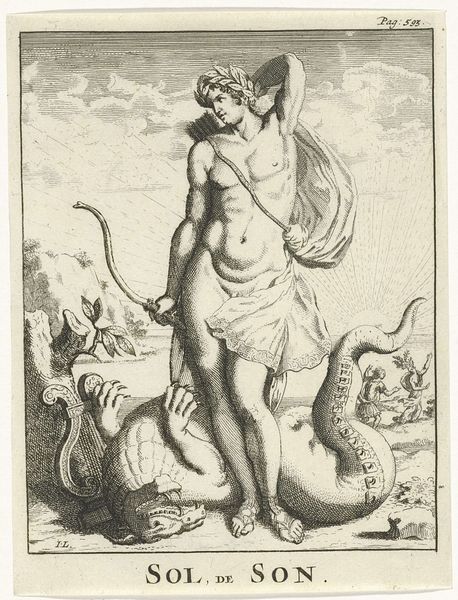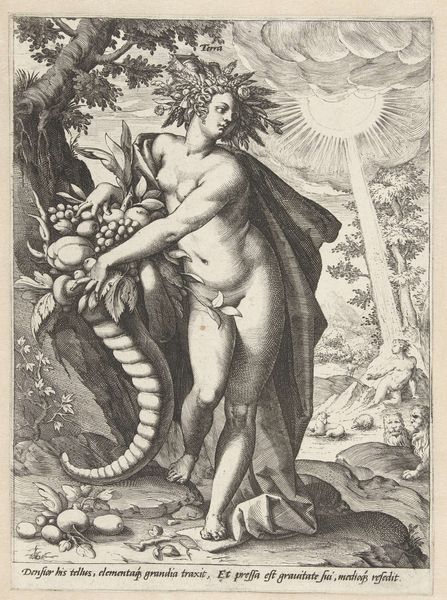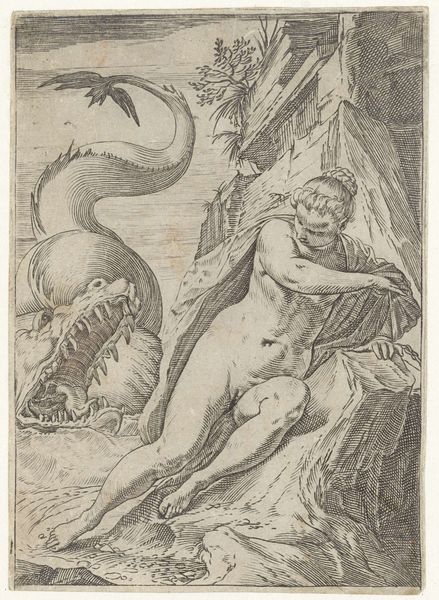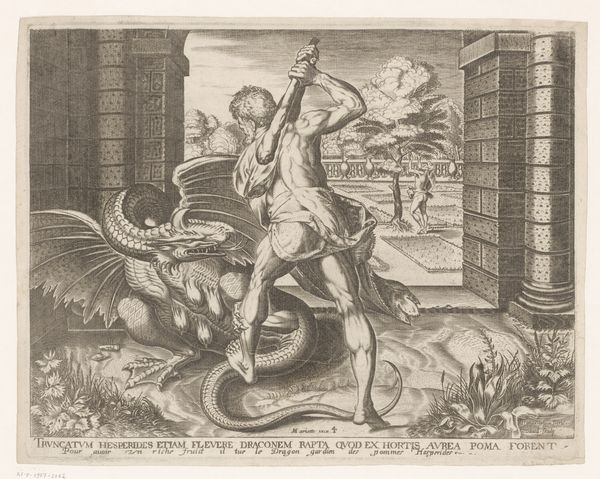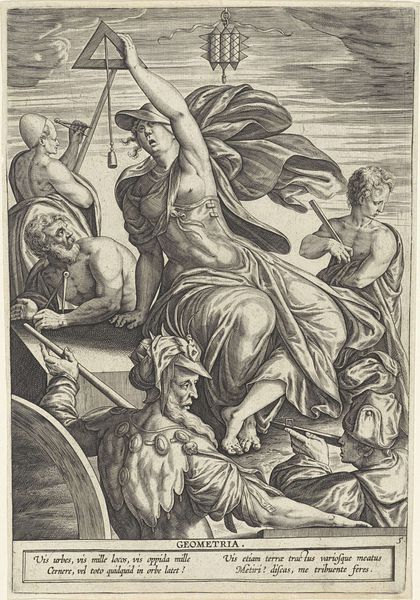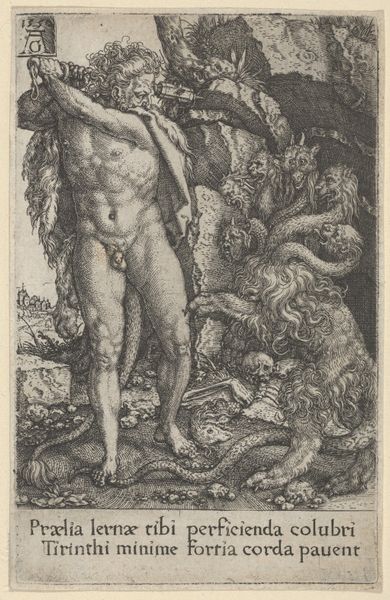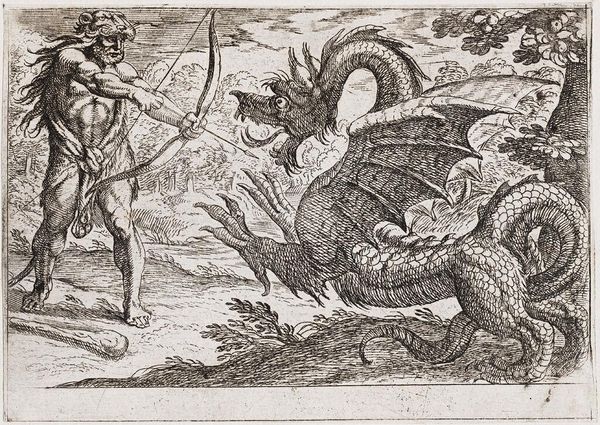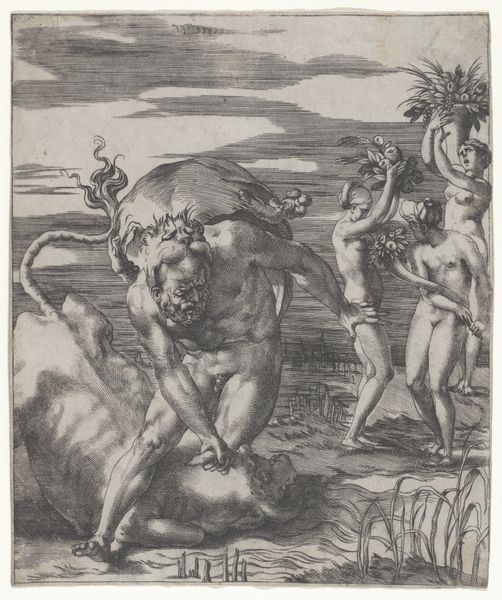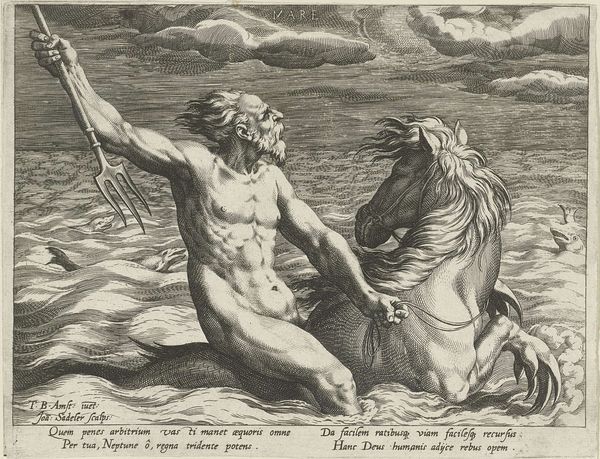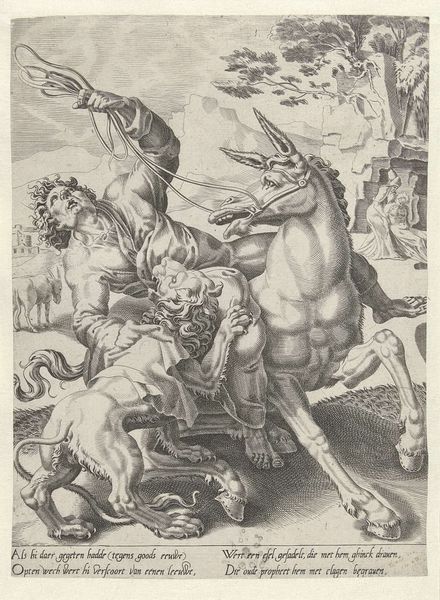
drawing, etching, paper, ink
#
drawing
#
etching
#
mannerism
#
figuration
#
paper
#
ink
#
history-painting
#
italian-renaissance
#
nude
Dimensions: height 153 mm, width 108 mm
Copyright: Rijks Museum: Open Domain
Curator: Agostino Carracci's "Andromeda," likely created between 1590 and 1595, presents a classic mythological scene rendered in ink on paper through etching and drawing techniques. What strikes you most about it initially? Editor: The composition is immediately captivating. There’s a clear contrast between the static rock formation and the dynamic swirl of the sea monster, drawing the eye to the vulnerability of Andromeda chained to the cliff. You can feel the precariousness of her situation, visually speaking. Curator: Absolutely, that sense of vulnerability speaks volumes, doesn't it? Consider the period. The Mannerist style allows Carracci to delve into Andromeda's emotional state and also the constraints placed upon women in society through myths such as these. She's posed, literally bound by patriarchal expectations. Editor: That's a compelling point, especially thinking about the materiality. This isn’t a grand oil painting; it’s an etching, a relatively reproducible medium. Does that accessibility allow for a wider dissemination of these ideas about female subjugation? I'm wondering who was consuming images such as this and where were they consuming them? Curator: That’s key. These prints were often collected into albums or circulated amongst artists and intellectuals. Disseminating such potent narratives for study and pleasure complicates our relationship with it, yet the starkness of the print emphasizes the severity of Andromeda’s predicament. It highlights the limited scope for women. Editor: I am curious about how the sea monster is imagined. Look at the etching technique itself, see how the lines vary in thickness and create texture to delineate scales, the crashing water. This work makes you consider its production, and how the creation of this monster is made to parallel with the very real terror such creatures inspired. Curator: Indeed. Carracci doesn't just present a passive figure; Andromeda, despite her chains, extends her arm in a gesture of defiance. To understand it, we have to look at not only Andromeda’s experience but to the symbolic challenge against expected social roles within larger cultural stories. Editor: By considering that labor, we come closer to understanding not only Carracci’s artistic intentions but the cultural values embedded within. It urges us to really dig in and ask, "What sort of labor and power created and perpetuates this symbolic imprisonment?" Curator: Exactly, focusing on both the form and the forces is key. Thank you, I hadn't considered it that way! Editor: Of course, these pieces remind us that material conditions shaped more than art, they also deeply shaped our relationship to myth.
Comments
No comments
Be the first to comment and join the conversation on the ultimate creative platform.
